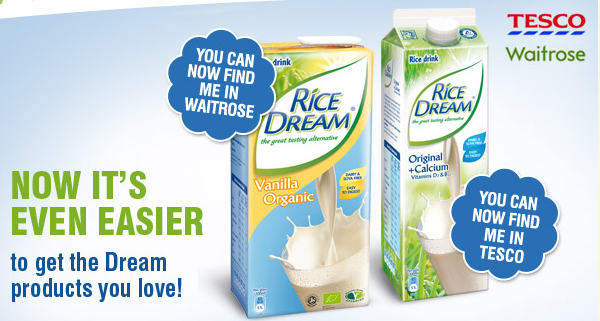Rice Milk as a Dairy Free Alternative to Milk
Often overlooked, rice milk is an extremely beneficial alternative to cow’s milk. Not only is it an ideal option for people who suffer from lactose intolerance, but it is also low in fat and can even be a worthwhile substitution for milk that can be used in cooking and baking. Rice milk is comprised of brown rice syrup, brown rice starch and boiled rice. Some manufacturers will also add certain thickening agents to make it easier to bake with. In order to mimic the taste of cow’s milk, some manufacturers will also sweeten their product with vanilla.
The Perfect Alternative
Since it does not contain any animal by-products, this milk alternative is popular with both vegans and vegetarians in addition to people suffering from lactose intolerance. In fact, many other milk alternatives such as soya milk or almond milk are still able to trigger allergies in some individuals. Rice milk is highly unlikely to cause this reaction in people with food sensitivities and it is considered a hypoallergenic food. It can even give a little boost to your immune system as well as it is packed full with antioxidants. Rice milk naturally contains more selenium and manganese than any other milk substitute. Both selenium and manganese are extremely powerful antioxidants responsible for protecting you from an array of cancers and infections.
Healt Benefits Associated with Rice Milk
Many people who are considering or forced into a dairy-free diet are concerned about how they will be meeting their calcium intake. Going dairy-free should never mean skimping on your nutritional needs. Thankfully, some rice milk products such as some varieties of Rice Dream are all natural, without added sweeteners, fortified with plenty of calcium as well as vitamins B12, D2, A, niacin and iron. Just one 7 ounce glass of the calcium fortified versions will provide you with over 30% of your daily calcium recommendation. This is exactly the same amount of calcium that one serving of full-milk can provide but without the unneeded excess fat and cholesterol. Without that added fat and cholesterol, this makes rice milk healthier for your heart as well.
One serving of rice milk will typically have around 140 calories. Compare this to the 185 calories found in one serving of whole milk. Additionally, whole milk will contain as many as 11 grams of fat per cup while rice milk will contain a mere 3 grams. Although skim milk will contain around 91 calories per cup, it also contains at least 5 milligrams of cholesterol. This can put you at risk of heart disease, stroke or a heart attack by causing the hardening of arteries. Rice milk by comparison has only 1 milligram per serving of cholesterol.
It’s all about the Taste
For those of you who might be skeptical of the flavor, the taste of rice milk is often slightly sweeter than cow’s milk due to the added vanilla flavoring many commercial manufacturers will add to their product. Still, many people prefer the flavor to that of milk, particularly children. Looking to cut down on the amount of sugar your child seems to want to add into their morning cereal? The added vanilla flavor is often the boost of flavor that is just enough to satisfy a morning sweet tooth.
When it comes to baking, rice milk can actually substituted in any recipe that calls for milk. While substitutions in baking can often be challenging due to differences in consistency and binding, just a simple adjustment can usually solve this. However, rice milk is extremely easy to work with as you can usually substitute it cup for cup without compromising the intended consistency. This means that if a certain recipe requires one cup of cow’s milk, you can simply use one cup of rice milk instead without complications.
Still, the flavor of your rice milk when baking will make a significant difference. This means that if you are baking a recipe that should be on the sweet side, you should choose a rice milk that has the added vanilla flavoring.



